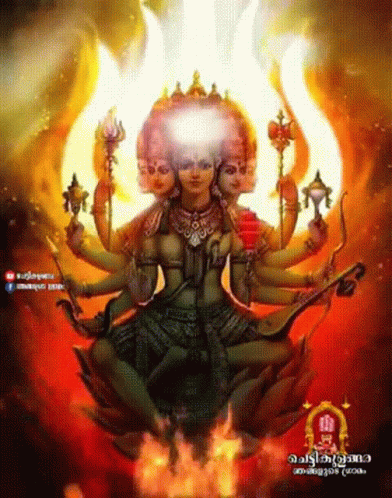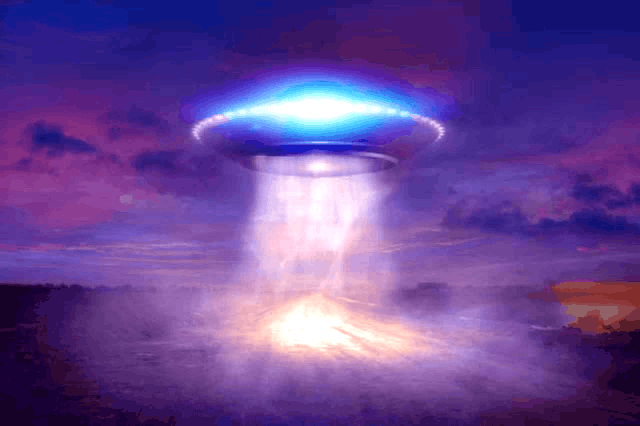
SIRIUS A; THE DOGSTAR

.jpg)

.jpg)
Sirius is a bright star in the night sky, also known as the Dog Star.
Sirius is part of the Canis Major constellation and is the brightest star in our night sky. In ancient Egypt, Anubis was revered as a god with a jackal or canine head, often linked to mummification rituals and guiding souls to the afterlife. The association with dogs and stars reflects cultural and mythological significance in different contexts.
The name "Sirius" is derived from the Greek word for "glowing" or "scorching." It's easily visible in the Northern Hemisphere and has been observed since ancient times, influencing various mythologies. Anubis, in Egyptian mythology, played a crucial role in the weighing of the heart ceremony during the afterlife judgment. His role as a guide for the afterlife reflects the importance of dogs and jackals in ancient Egyptian funerary practices. The celestial and mythological connections add depth to the symbolism surrounding both Sirius and Anubis.


Long before the publication of the Harry Potter series of books by J.K. Rowling and the existence of her character Sirius Black, that morphed into a black dog, the star Sirius, also called the Dog Star, had attracted the attention of humanity throughout the ages. The star Sirius has figured prominently in mythic and religious systems, and, as the brightest of the nighttime skies, caught the eye of the early sky watcher.
In fact, Sirius has been described by the authors of the widely acknowledged mythic study, Hamlet’s Mill, as the first star in heaven and the kingpin of archaic astronomy, a star ,the significance of which, far surpasses our unsuspecting expectations. The same idea was partially unveiled by 19th century Russian occult writer H.P. Blavatsky, who stated that the star Sirius exerts a mystic and direct influence over the entire living heaven and is to be found linked with every great religion of antiquity. What this premier role for the star Sirius may imply about the character Sirius Black remains unknown until Rowling’s septology is complete, yet the outline of something looming large on the horizon seems to be in sight.
Located just southeast of prominent Orion, Sirius is easily identified by northern hemisphere dwellers in the winter sky. Sirius sits in the constellation Canis Major (The Greater Dog), the eastern edge of which borders on the Milky Way. Sirius itself is located just to the lower left of the three conspicuous stars forming the belt of Orion, and is most readily visible from approximately December to February (in the northern hemisphere). As the brightest of the stars in its grouping, Sirius is thus designated Alpha Canis Major, and at 8.3 light years away, it is one of the stars nearer to our system.
The star Sirius appears in Chapter an-Najm (meaning “the Star”) in the Quran. The double stars that comprise Sirius approach each other with their axes in a bow-shape once every 49.9 years. This astronomical phenomenon is indicated in the verses of the Chapter an-Najm in verse 9 and verse 49.
When certain concepts mentioned in the Qur'an are studied in the light of 21st century scientific discoveries, we find ourselves imparted with yet more miracles of the Qur'an. One of these is the star Sirius, mentioned in the Chapter an-Najm 49:
… Verily, He is the Lord of Sirius. (Qur'an, 53: 49)
The fact that the Arabic word "Shiaara" the equivalent of the star Sirius, appears only in Surat an-Najm, meaning only "Star," 49 is particularly striking. Because, considering the irregularity in the movement of Sirius, the brightest star in the night sky, as their starting point, scientists discovered that it was actually a double star. Sirius is actually a set of two stars, known as Sirius A and Sirius B. The larger of these is Sirius A, which is also the closer to the Earth and the brightest star that can be seen with the naked eye. Sirius B, however, cannot be seen without a telescope.
He was two bow-lengths away or even closer. (Qur'an, 53:9)
The description in the Chapter an-Najm, verse 9, may also describe how these two stars approach one another in their orbits, (Allah knows best). This scientific fact, which nobody could have known at the time of the revelation of the Qur’an, once again proves that the Qur'an is the Word of Almighty Allah.
[He is] the Originator of the heavens and earth. When He decides on something, He just says to it, “Be!” and it is. (Quran, 2:117).
According to twentieth century scholar Robert K. G. Temple, an astounding body of knowledge about Sirius made its way from Egypt to a West African tribe called the Dogon (an ancient African tribe from Mali). In his extraordinary book entitled The Sirius Mystery, Temple traces the origin of the Dogon initiatory tradition back to ancient Egyptian times, 3200 B.C. As Temple reveals, the Dogon, in every way primitive, have since time immemorial closely guarded a secret initiatory tradition containing accurate and detailed astronomical knowledge regarding Sirius. For example, long before the rise of modern astronomy, the Dogon knew that Sirius was a member of a binary star system, and possibly of a triple star system. They knew of the elliptical orbit of Sirius B, its correct period of motion, it’s extremely small size and excessive weight, and its composition.
Artifacts of ancient civilizations have revealed that Sirius was of great importance in astronomy, mythology and occultism. Mystery schools consider it to be “sun behind the sun” and, therefore, the true source of our own sun’s potency. If our sun’s warmth keeps the physical world alive, Sirius is considered to keep the spiritual world alive. It is the “real light” shining in the East, the spiritual light, where as the sun illuminates the physical world, which is considered to be a grand illusion .
In Ancient Egypt, Sirius was regarded as the most important star in the sky. In fact, it was astronomically the foundation of the Egyptians’ entire religious system. It was revered as Sothis and was associated with Isis, the mother goddess of Egyptian mythology. Isis is the female aspect of the trinity formed by herself, Osiris and their son Horus. Modern scholars have considered Sothis to be Sirius. Ancient Egyptians held Sirius in such high regard that most of their deities were associated, in some way or another, with the star. Anubis, the dog-headed god of transitions, had an obvious connection with the Dog Star and Tot-Hermes, the great teacher of humanity, was also esoterically connected with the star.
The Egyptian calendar system was based on the heliacal rising of Sirius that occurred just before the annual flooding of the Nile during summer. The star’s celestial movement was also observed and revered by ancient Greeks, Sumerians, Babylonians and countless other civilizations. The star was therefore considered sacred and its apparition in the sky was accompanied with feasts and celebrations. The Dog Star heralded the coming of the hot and dry days of July and August, hence the popular term “the dog days of summer”.
“This ancient people (Egyptians) knew that once every year the Parent Sun is in line with the Dog Star. Therefore, the Great Pyramid was so constructed that, at this sacred moment, the light of the Dog Star fell upon the square ‘Stone of God’ at the upper end of the Great Gallery, descending upon the head of the high priest, who received the Super Solar Force and sought through his own perfected Solar Body to transmit to other Initiates this added stimulation for the evolution of their Godhood. This then was the purpose of the ‘Stone of God,’ whereon in the Ritual, Osiris sits to bestow upon him (the illuminate) the crown or celestial light.”
“North and South of that crown is love,” proclaims an Egyptian hymn. “And thus throughout the teaching of Egypt the visible light was but the shadow of the invisible Light; and in the wisdom of the ancient country the measures of Truth were the years of the Most High.”
Recent scientific discoveries relating to the Great Pyramid and its mysterious “air shafts” have lead researchers to further confirm the importance of Sirius within the pyramid. The shafts are aligned to let the light from the Star, during the Hellenic rising, to shine into the chambers where various members of the Pharaoh family were buried.
To claim that Sirius is “important” to Hermetic Orders would be a gross understatement. The Dog Star is nothing less than the central focus of the teachings and symbolism of secret societies. The ultimate proof of this fact: many secret societies are actually named after the star.
In Masonic lodges, Sirius is known as the “Blazing Star” and a simple look at its prominence in Masonic symbolism reveals its utmost importance. The Masonic author William Hutchinson wrote about Sirius: “It is the first and most exalted object that demands our attention in the Lodge.” The same way the light of Sirius made its way into the Great Pyramid during initiations, it is symbolically present in Masonic lodges.
In Freemasonry, it is taught that the Blazing Star is a symbol of deity, of omnipresence (the Creator is present everywhere) and of omniscience (the Creator sees and knows all). Sirius is therefore the “sacred place” all Masons must ascend to: It is the source of divine power and the destination of divine individuals. This concept is often represented in Masonic art.
In 1907, Crowley started his own occult order called the A.A. – short for Argentium Astrum, which can be translated to ‘The Order of the Silver Star’. The ‘Silver Star’ was, of course, a reference to Sirius. Even if Crowley usually referred to the Dog Star in veiled terms, the whole of his Magickal philosophy, from his development as a young Freemason through to his final years as the Head of the O.T.O, is wholly in accordance with the influence of Sirius, which was identified and expressed by other writers of his era. His alleged contact with his Holy Guardian Angel that later led to the channeling of ‘Liber AL: The Book of the Law’ is believed to have originated from Sirius.
It is not surprising that this has lead Sirius has found its way into our “modern” world. The United States Dollar depicts Giza pyramid and the symbols related to Sirius.
It is with emphasis that the Allah in the Quran affirms that He is the Lord of Sirius. What needs to be understood is that humanity has studied the stars and drew these anomalies and drew “predictions” by drawing conclusions of the rising of Sirius and the Zodiac signs. These are the “signs” as Allah says in the Quran “for those that understand”. The verse in the Quran is to remind mankind that the objects in creation are there as signs and guidance and not objects of worship, for there is none worthy of worship besides the Creator.
The Stars like the rest of creation are there for mans usage to draw closer to his Lord, and not to become distractions from the journey to the Lord and Creator of the Universe and all it contains.



The star coordinates of Sirius A are:
- Right Ascension:
06h 45m 08.9173s
- Declination:
-16° 42' 58.017"
- Distance:
8.61 light-years
In celestial longitude and latitude, Sirius A is located at:
- Galactic longitude: 227.23°
- Galactic latitude: -35.08°

Sirius A:
Allegedly inhabited by humanoid beings known as the Sirians, characterized by pale blue skin, blonde hair, and standing 5-6 feet tall. They are described as advanced, peaceful, and closely linked to Earth's development.
Sirius B:
Supposedly home to the Katarians, small reptilian creatures standing 3-4 feet tall, with scaly skin and large eyes. They are believed to be technologically advanced and possess a complex society.
Sirius C:
Hypothetically inhabited by the Cetarians, tall, slender beings standing 7-8 feet tall, with almost translucent skin and large almond-shaped eyes. They are thought to be highly spiritual and possess advanced universal knowledge.
SIRIUS A GALLERY















